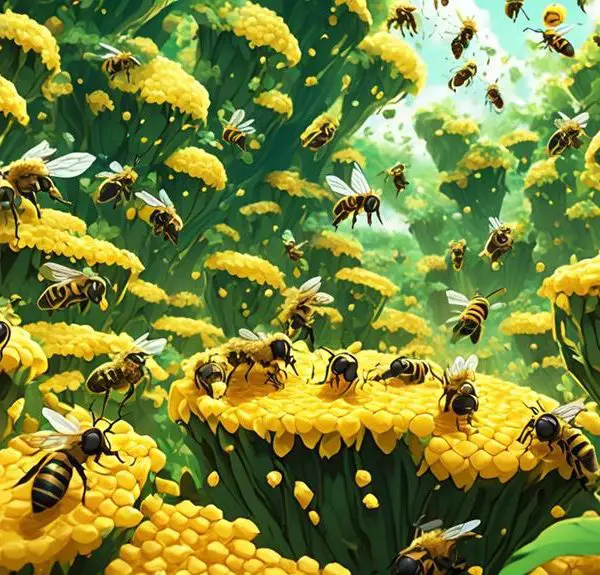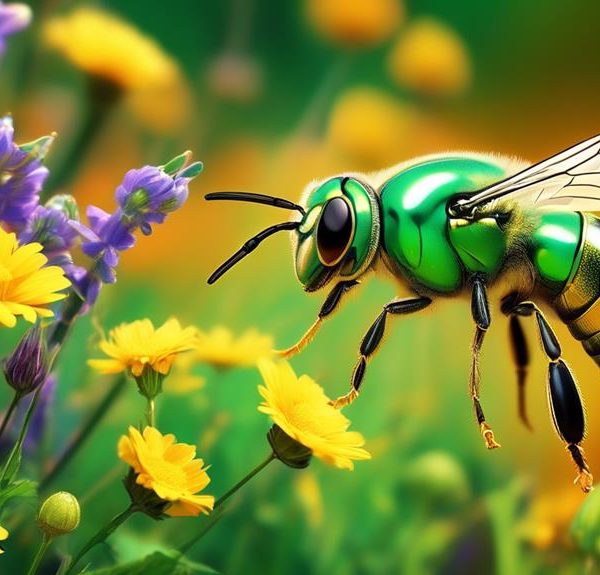Yearning to discover the fascinating differences between Mason bees and Sweat bees? Delve into their unique lifestyles and contributions to our ecosystem.
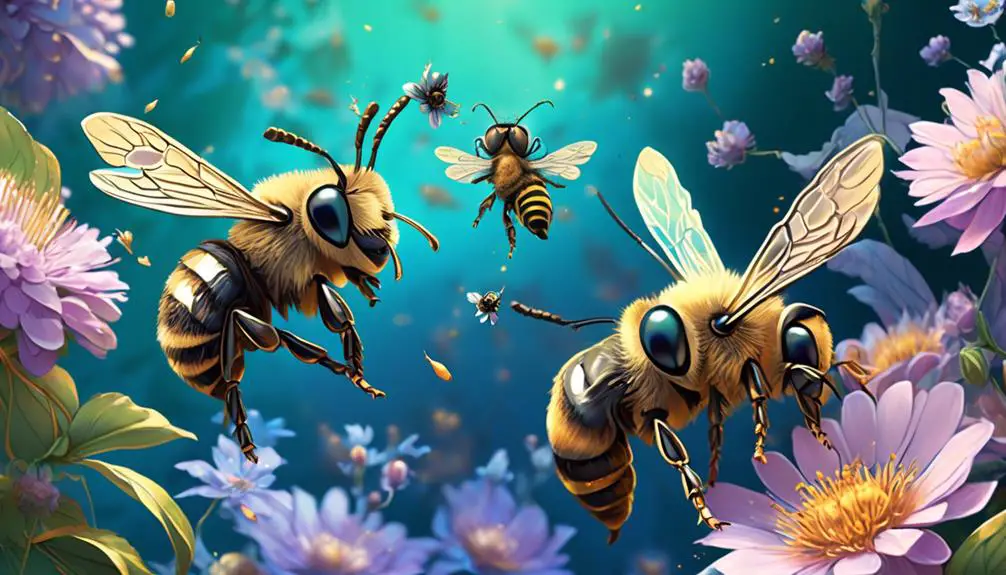
Mason Bees Vs Sweat Bees
In the buzzing world of bees, the mason bee's industrious nature starkly contrasts with the sweat bee's seemingly laid-back attitude. You might think all bees are created equal, but that's not quite the case.
Mason bees, known for their solitary lifestyle and exceptional pollinating abilities, are a far cry from the social and somewhat less efficient sweat bees. Yet, each species has its own unique contribution to our ecosystem.
Now, wouldn't you like to know more about these intriguing creatures and how they differ?
Key Takeaways
- Mason bees and sweat bees are both important pollinators in their habitats and play a crucial role in maintaining biodiversity and supporting food production.
- Mason bees have a solitary lifestyle and build their own nests using mud or clay, while sweat bees exhibit a spectrum of social behavior and some species form small communities sharing a common nest entrance.
- Mason bees are attracted to fruit trees and flowers, particularly drawn to high cross-pollination rates, while sweat bees are attracted to human sweat for salt and pollinate a wide range of flowers, including those overlooked by other bee species.
- In terms of physical characteristics, mason bees are metallic blue or blue-black in color, larger in size (~1/2 inch), while sweat bees can be a variety of colors, from metallic green to black, and are smaller in size (~1/4 to 1/2 inch).
Understanding Mason Bees
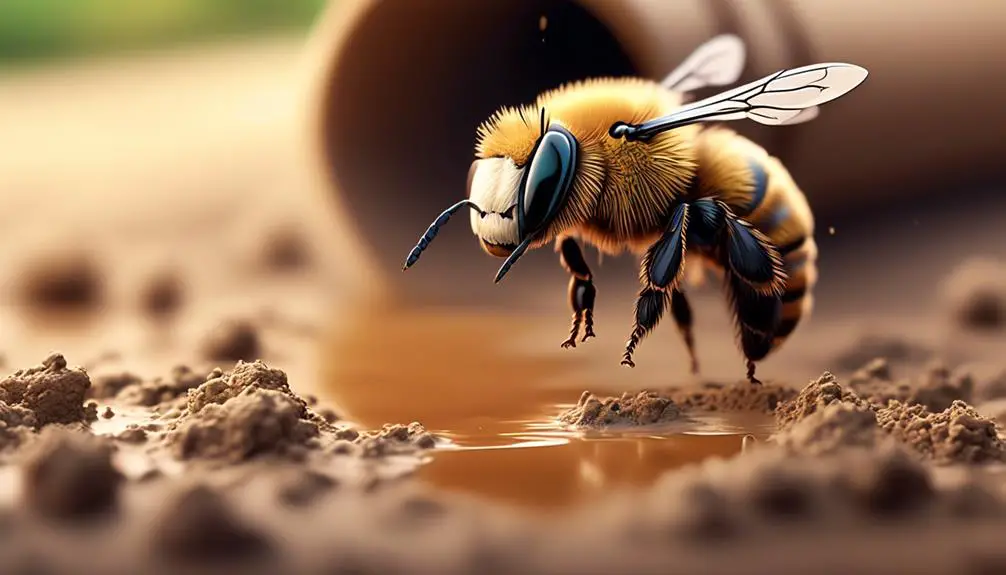
Diving into the world of Mason Bees, you'll find they're solitary creatures with fascinating behaviors and characteristics that make them stand out in the bee kingdom. Unlike honeybees, they don't live in colonies. They're named for their habit of using mud or clay to build little 'rooms' in their nests, just like masons. These bees are native to North America and are highly efficient pollinators.
You'll note the mason bee's striking metallic blue or greenish color, a distinctive trait. Their size ranges from a quarter to half an inch long, and they've a robust body structure. Unlike honeybees, they don't produce honey or beeswax, and their nests are usually in hollow reeds or holes in wood made by other insects.
Don't expect to be stung by a mason bee unless you handle them roughly. They're non-aggressive and their sting is far less painful than that of honeybees or wasps. They're not after your picnic, either; they're vegetarians who feed on nectar and pollen.
Understanding mason bees helps you appreciate these busy, solitary artisans and their essential role in our ecosystem.
Sweat Bees: An Overview
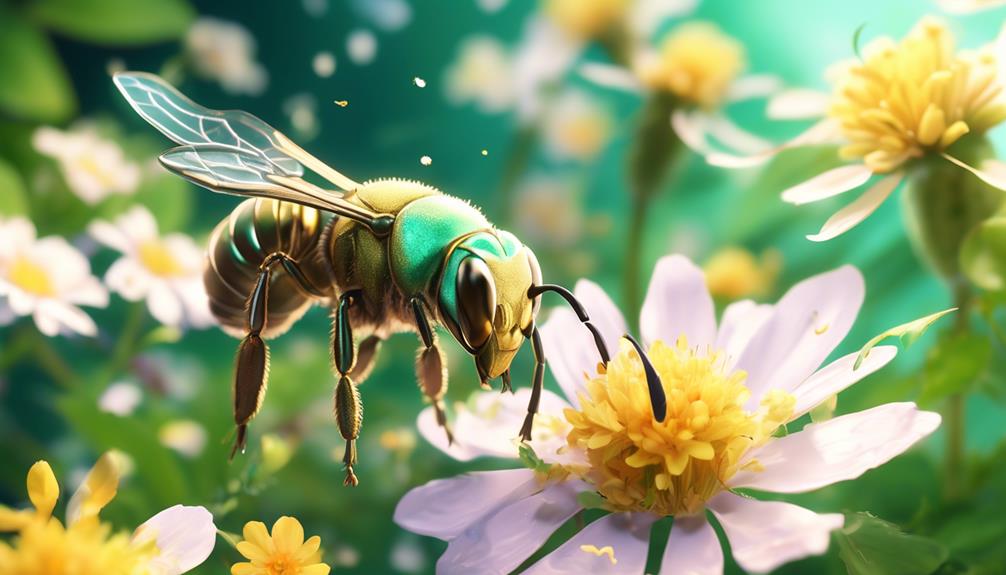
Shifting our focus to sweat bees, you'll discover these tiny insects, often no more than half an inch in size, with a reputation for being attracted to human sweat. They belong to the Halictidae family, one of the largest families in the bee order, comprising over 2000 species globally. Sweat bees aren't just attracted to sweat for its salt content, but also for its moisture. This small bee drinks it to supplement its diet and hydrate.
You'll find sweat bees in various colors, from metallic green-blue to dull brown. Despite their name, they're not aggressive and only sting when threatened. Their sting is far less painful than that of other bees.
They're categorized as solitary bees because they don't live in large colonies like honeybees. However, they're not strictly solitary, some species form small communities, sharing a common nest entrance but maintaining separate brood cells.
In terms of their ecological role, sweat bees are crucial pollinators. They visit a variety of plants, contributing significantly to our food system. Their attraction to sweat can be a nuisance, but they're largely harmless and beneficial to the environment.
Comparing Physical Characteristics
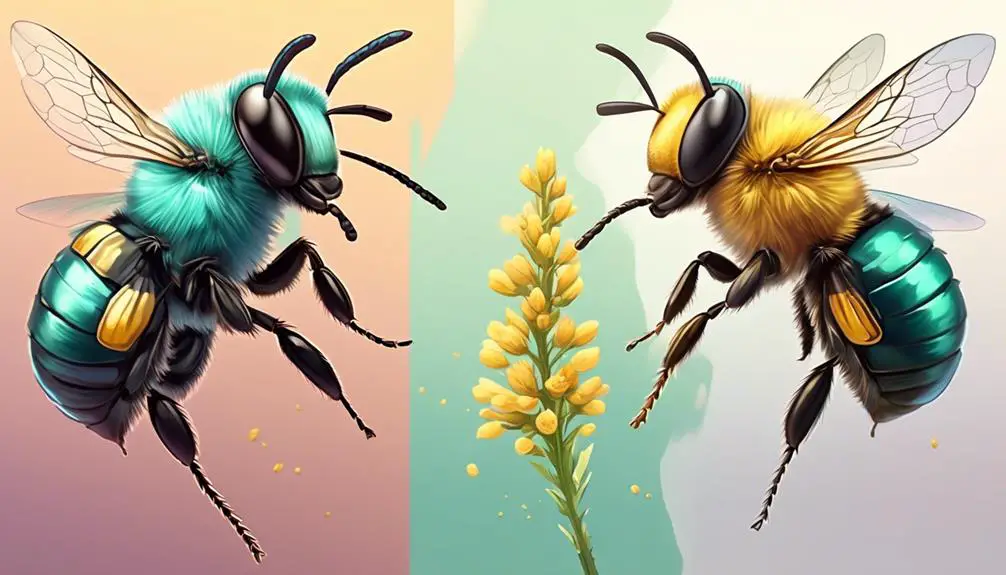
When you compare the physical characteristics of mason bees and sweat bees, several differences and similarities become evident, each playing a unique role in their respective lifestyles and ecological roles.
For starters, mason bees are usually metallic blue or blue-black, while sweat bees can be a variety of colors, from metallic green to black. They can even have stripes like a honey bee. Both bee types are solitary, but sweat bees are smaller in size.
Here is a quick comparison table:
Characteristic | Mason Bee | Sweat Bee |
|---|---|---|
Color | Metallic blue or blue-black | Variety of colors |
Size | Larger (~1/2 inch) | Smaller (~1/4 to 1/2 inch) |
Social Structure | Solitary | Solitary |
Sting Potency | Mild | Mild |
Nesting Habit | Hollow reeds or tubes | Underground or in wood |
Behavioral Differences and Similarities
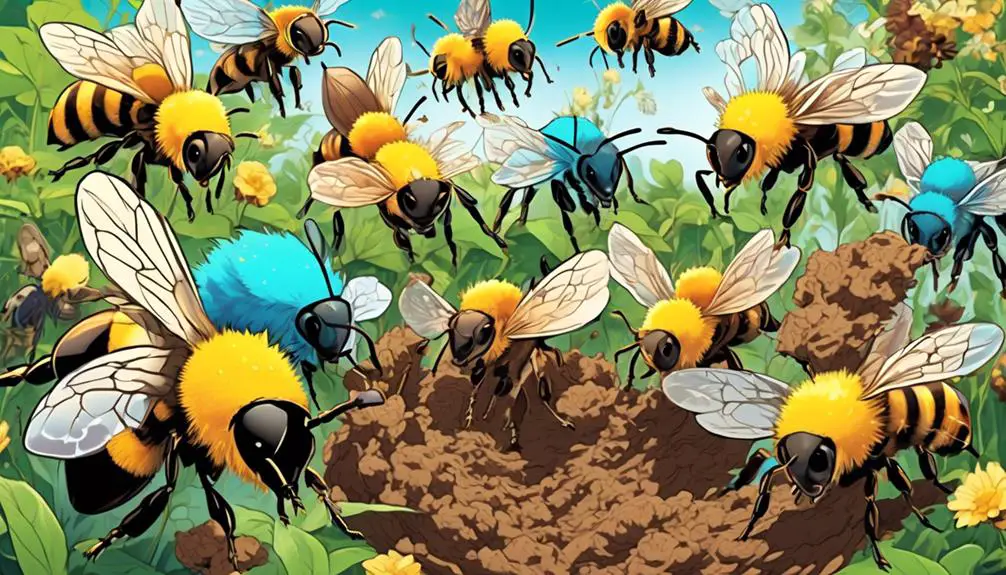
Beyond their physical attributes, mason bees and sweat bees also exhibit intriguing behavioral differences and similarities that reflect their unique ecological roles and survival strategies.
Mason bees, for instance, are solitary creatures. They don't form colonies like honeybees or bumblebees, but instead, each female bee will build and provision her own nest. These nests are often located in holes or cracks in wood, hence their name.
On the other hand, sweat bees exhibit a spectrum of social behavior varying from solitary to eusocial, where a single female or a group of females construct nests and share the workload. Sweat bees also have a peculiar trait; they're attracted to human sweat, which they use as a source of salt.
Despite these differences, both mason bees and sweat bees share a common trait – their incredible industriousness. Both types of bees are important pollinators and work tirelessly to gather pollen and nectar, playing vital roles in our ecosystems.
Each bee, whether a mason or a sweat bee, contributes significantly to the pollination of flowers and crops, thus ensuring the continuance of many plant species.
Role in the Pollination Process
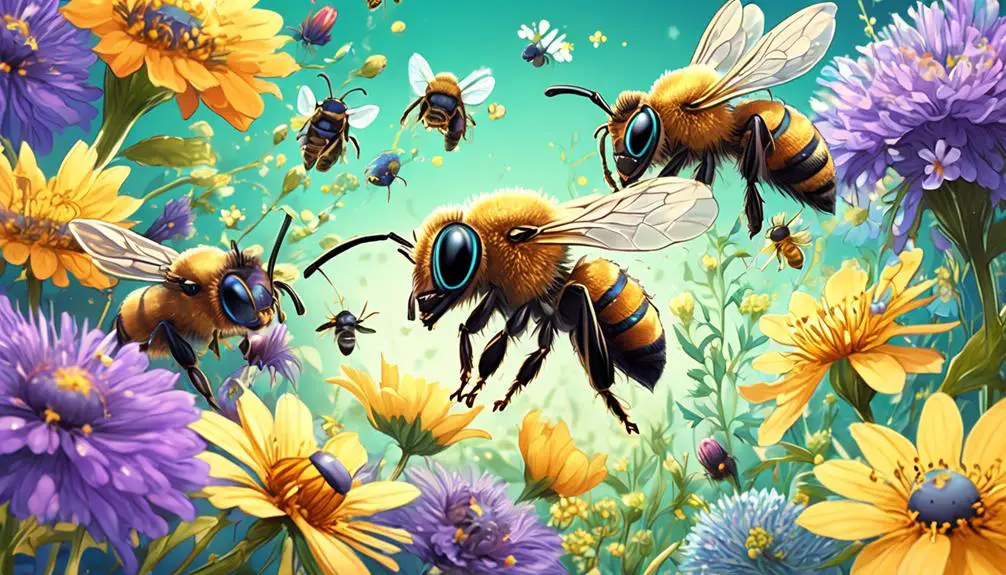
Understanding the role both mason bees and sweat bees play in the pollination process proves crucial to comprehending their importance in our ecosystems.
You might be familiar with the term 'pollination', but what exactly does it entail? It's the transfer of pollen from a flower's male parts to its female counterparts, enabling fertilization and the production of seeds.
Now, let's delve into the specifics. Mason bees, known as efficient solitary pollinators, are particularly drawn to fruit trees and flowers. They carry pollen on their bellies, which readily drops off as they flit from bloom to bloom. This 'messy' process results in high cross-pollination rates, crucial for genetic diversity and resilience in plant populations.
On the other hand, sweat bees, despite being less efficient pollinators, play a central role in the pollination of wild plants and crops due to their sheer numbers and variety. You'll often find them buzzing around a wide range of flowers, including those overlooked by other bee species.
Conclusion
In conclusion, you've learned that mason bees and sweat bees are distinct species with unique characteristics. They differ in physical appearance, behavior, and their roles in pollination.
Despite their differences, they're both vital parts of the ecosystem, performing necessary roles in plant reproduction.
So, the next time you spot these tiny creatures buzzing about, you'll appreciate their significance in our world. Keep in mind, preserving bee populations is crucial for maintaining a healthy environment.

